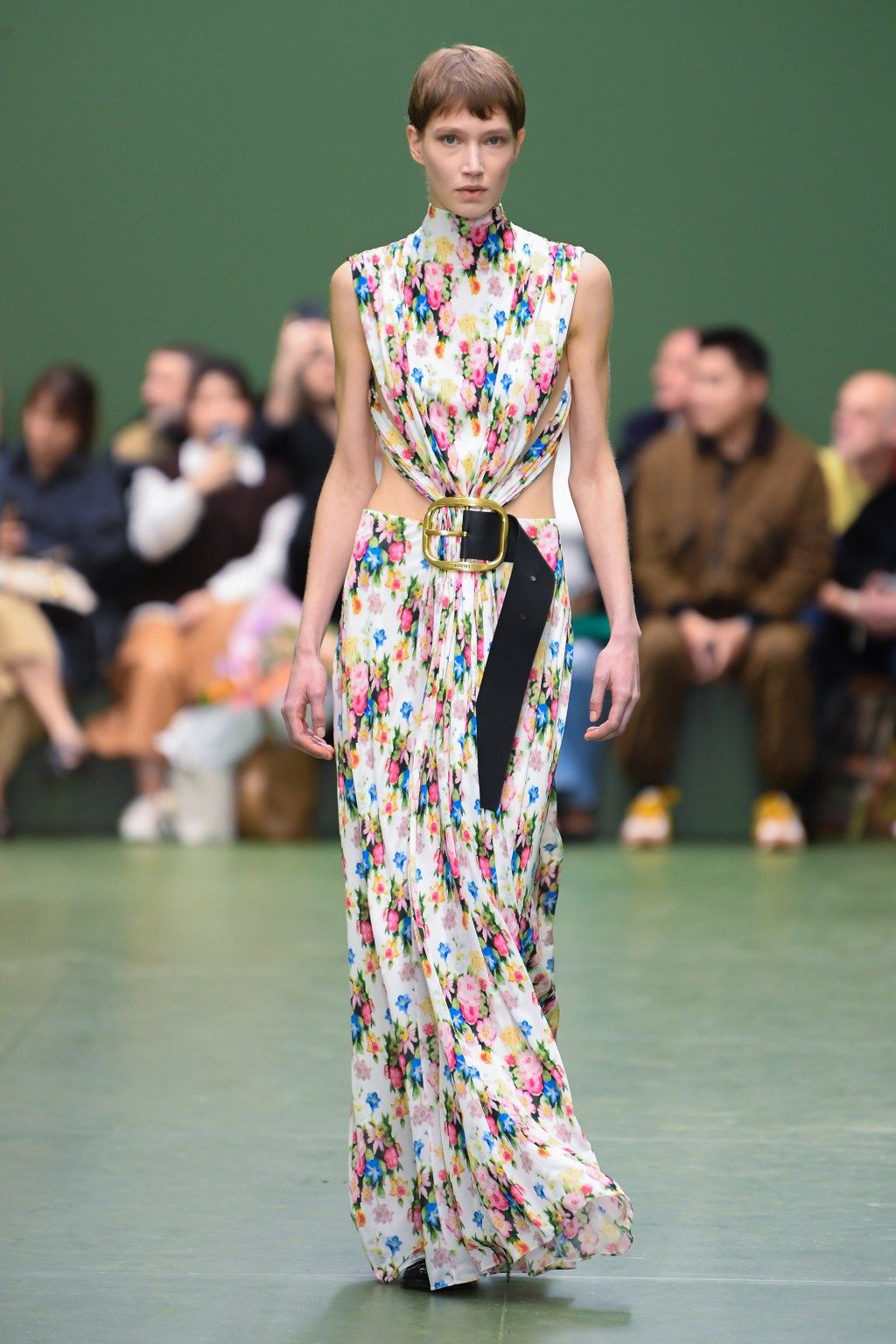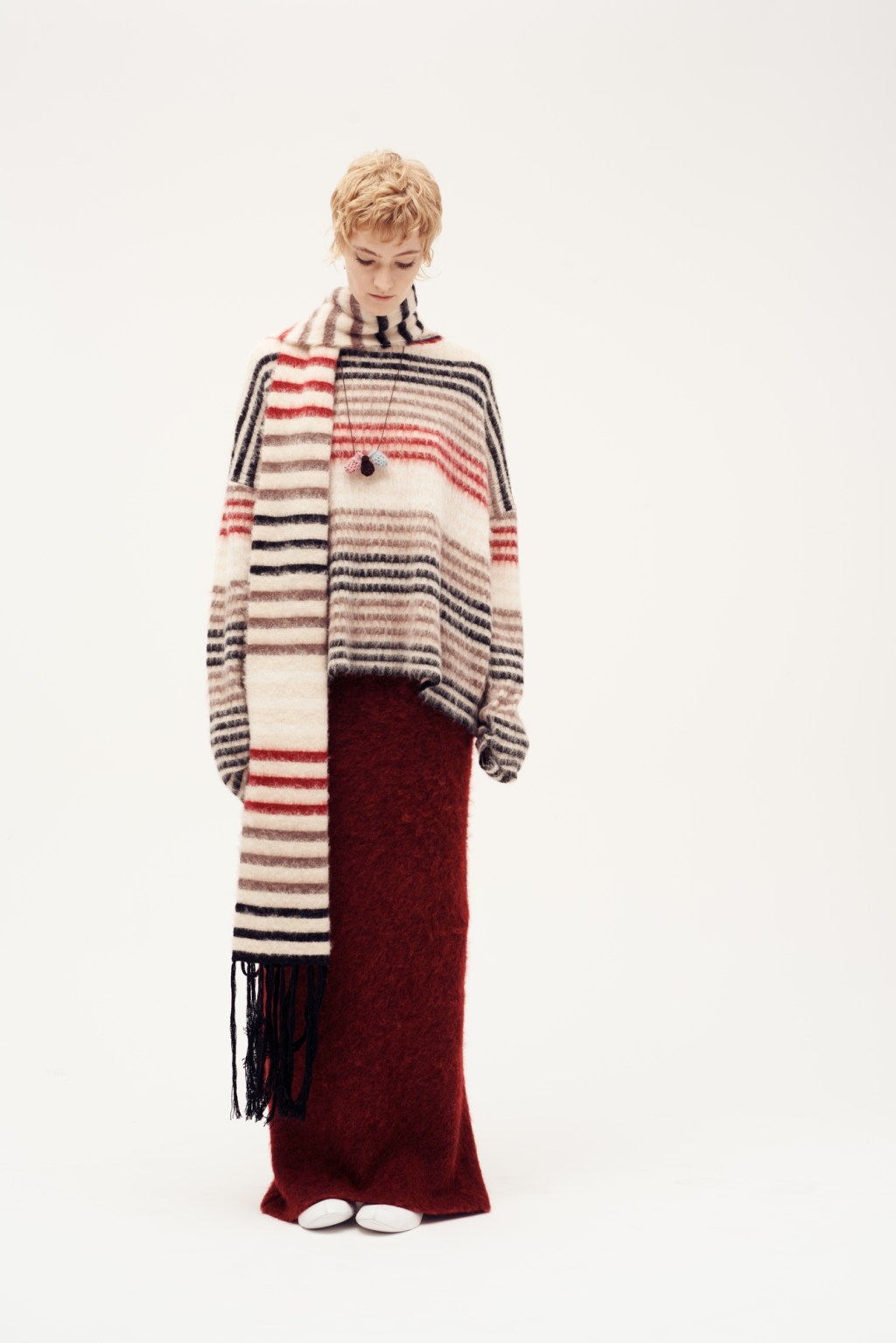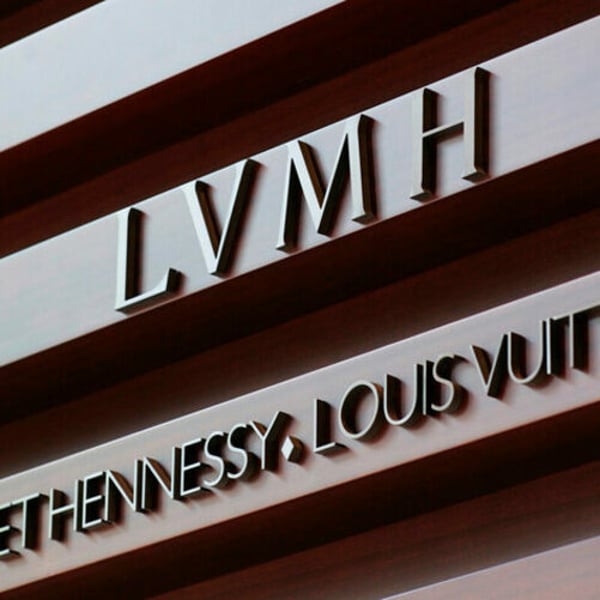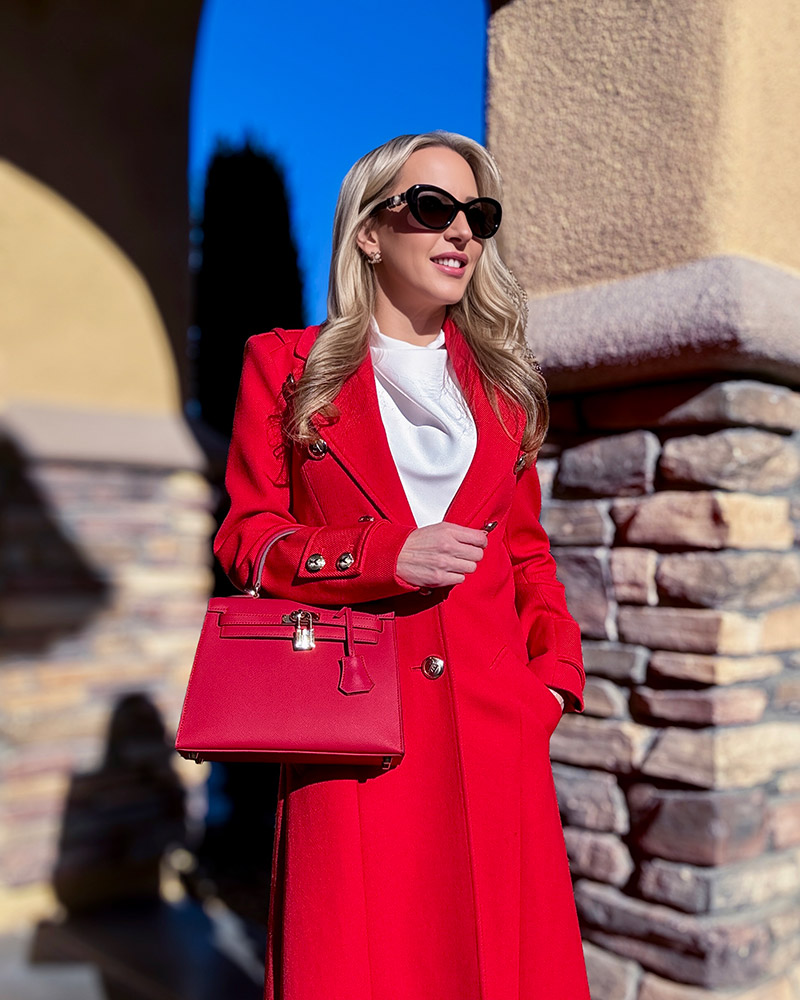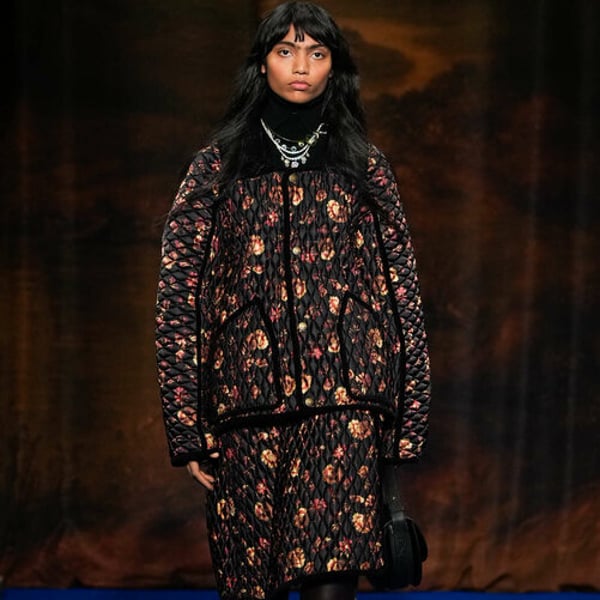The shows seem to be divided into two main camps this European season: those that focus on real clothes (Dior, Bottega Veneta, Burberry) and those that propose concepts (Saint Laurent, Marni, Undercover).
At Loewe, Jonathan Anderson offered both, and his fall show veered between quirky luxury and explosions of elegance, though perhaps less of the latter than a few seasons ago.
The Etonian morning coat, which sounds as imposing as it can look, served as a metaphor for class and provenance, the two concepts that were springboards for Anderson's show, which also showcased incredible and unexpected craftsmanship.
Anderson's morning coats were elegantly cut, the sides extending into magical spikes that contrasted with the floral knit dresses or MC Hammer pants beneath, the spikes trailing the floor.
Organized in a labyrinth of forest-green rooms reminiscent of an art museum, small landscape paintings by Albert York hung on the walls, the show opened with knitted dresses in striking hourglass shapes, the fabric collected in a buckle in the navel, a useless piece of leather. belt hanging loose from him.
The appearances became more extravagant or more youthful as the show progressed. A draped floral minidress with what looked like a giant water droplet suspended over the shoulder was an example of the former; Giant-sized cargo pants, like jodhpurs on steroids, represented the ultimate. They looked great under smart little jackets and a crisp shirt buttoned up to the neck.
The imposing silver lapels of the men's coats and jackets dazzled; the first carved in wood; the latter, a composition of metal rods reminiscent of “Metropolis,” one of the many references to the 1920s that appear this season.
Attending a Loewe exhibition these days (far, far away at the Château des Vincennes) represents a nearly three-hour commitment, but this season came with the reward of the first exhibition in Europe dedicated to York, whose charming works were collected by Jacqueline Kennedy, which caused Anderson to decide on his provenance exploration.
“The idea of 'the aristocratic' is now something strange, almost non-existent, almost like a caricature,” he reflected after the show.
Also charming were Anderson's unconventional prints: turnips for fluid silks, floral tableware in dense caviar beads for sweatshirts and biker boots, and an image of a dog sleeping on a rug splashed across the front of a stiff trapeze dress from felt. .
But it's those morning coats that stay in your brain. Anderson said he found a cache of them from the 1920s and studied their construction.
“I felt like there was something incredibly empowering about it,” she said. “It makes you hold back.”
For more Paris Fashion Week reviews, click here.

